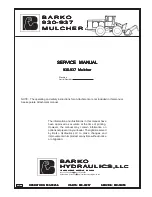
RP0177-2000
NACE International
5
for any person contacting both structures and/or their
grounds simultaneously. In such cases, both
grounding systems should be connected, either
directly or through a DC decoupling device, unless it
is determined that such a connection is undesirable.
For more details on designing systems for
independent structures, see IEEE
(1)
Standard 80.
3
4.5 Bonding to Existing Structures
4.5.1 One available means of reducing induced AC
potentials on a structure involves bonding the
structure to the power system ground through
adequately sized cables and decoupling devices.
Such bonds may, under fault conditions, contribute
to increased potentials and currents on the affected
structure for the duration of the fault. If the bonded
structure is aboveground, or well insulated from
earth, elevated potentials may be created and exist
temporarily along the entire length of the bonded
structure. In such instances, additional protective
devices may be required outside the immediate area
of the origin of electrical effects. Close coordination
should be maintained with all other utilities in the
area and especially with those utilities to which bond
connections are proposed. The corresponding
utilities shall be notified in advance of the need to
bond to their structures and shall be furnished with
details of the proposed bonding arrangements. A
utility may prefer to have the connection to its
structures made by its own personnel. Other
methods of reducing AC potentials should be
considered before committing to this one. The
increased hazards during fault conditions and extra
installation requirements may make this method
questionable from safety and economic perspectives.
4.6 Distributed Anodes
4.6.1 Whenever distributed galvanic anodes are
used as part of the grounding system to reduce the
AC potential between a structure and earth, they
should be installed in close proximity to the protected
structure and away from power system grounds.
Connecting anodes directly to the affected structure,
without test connections, may be desirable. Direct
connection reduces the number of points at which
people can come in contact with the structure, and
offers the shortest path to ground. Should it be
desirable, for measurement purposes, to open the
circuit between the distributed grounding system and
the structure, the test lead connection should be
made in an accessible, dead-front test box. When
galvanic anodes are used as part of a grounding
system, the useful life of the electrode material
should be considered. Dissipation of the anode
material increases the grounding system resistance.
4.7 Casings
4.7.1 Bare or poorly coated casings may be
deliberately connected to a coated structure, through
a DC decoupling device, to lower the impedance of
the structure to earth during surge conditions and to
avoid arcing between the structure and the casing.
4.8 Connector (Electrical and Mechanical) and
Conductor Sizes
4.8.1 All anodes, bonds, grounding devices, and
jumpers must have secure, reliable, low-resistance
connections to themselves and to the devices to
which they are attached. Structure members with
rigid bolted, riveted, or welded connections may be
used in lieu of a bonding cable for part or all of the
circuit. For adequate sizing of bonding cables, refer
to Table 1 and Figures 1, 2, and 3. All cables,
connections, and structural members should be
capable of withstanding the maximum anticipated
magnitude and duration of the surge or fault currents.
4.8.2 Mechanical connections for the installation of
permanent protective devices should be avoided,
where practical, except where they can be inspected,
tested, and maintained in approved aboveground
enclosures. Where practical, field connections to the
structure and/or grounding device should be made by
the exothermic welding process. However,
compression-type connectors may be used for
splices on connecting wires. Mechanical connectors
may be used for temporary protective measures, but
extreme care should be taken to avoid high-
resistance contacts. Soft soldered connections are
not acceptable in grounding circuits.
Figure 1 is based on the assumption that no heat is
radiated or conducted from the cable to the
surrounding media during a fault period. Electrical
energy released in the cable equals the heat energy
absorbed by the cable. This is illustrated in Equation
(1):
I
2
Rt = 1,055 Q (watt seconds = BTU)
(1)
where I = fault current in amperes, R = average AC
resistance (in ohms) of conductor over temperature
range T
1
to T
2
(in degrees Fahrenheit), t = fault
duration in seconds, and Q = heat energy in British
Thermal Units. Q is calculated using Equation (2):
Q = CM (T
2
T
1
) (Thermodynamics)
(2)
____________________________
(
1
)
Institute of Electrical and Electronics Engineers (IEEE), 3 Park Avenue, 17
th
Floor., New York, NY 10016-5997.
Содержание CP 1
Страница 1: ...CP 1 Cathodic Protection Tester Course Manual February 2005 NACE International 2000 ...
Страница 265: ......
Страница 266: ......
Страница 267: ......
Страница 268: ......
Страница 301: ...RP0169 2002 32 NACE International ISBN 1 57590 035 1 ...
Страница 535: ...TM0101 2001 24 NACE International ISBN 1 57590 137 4 ...
















































